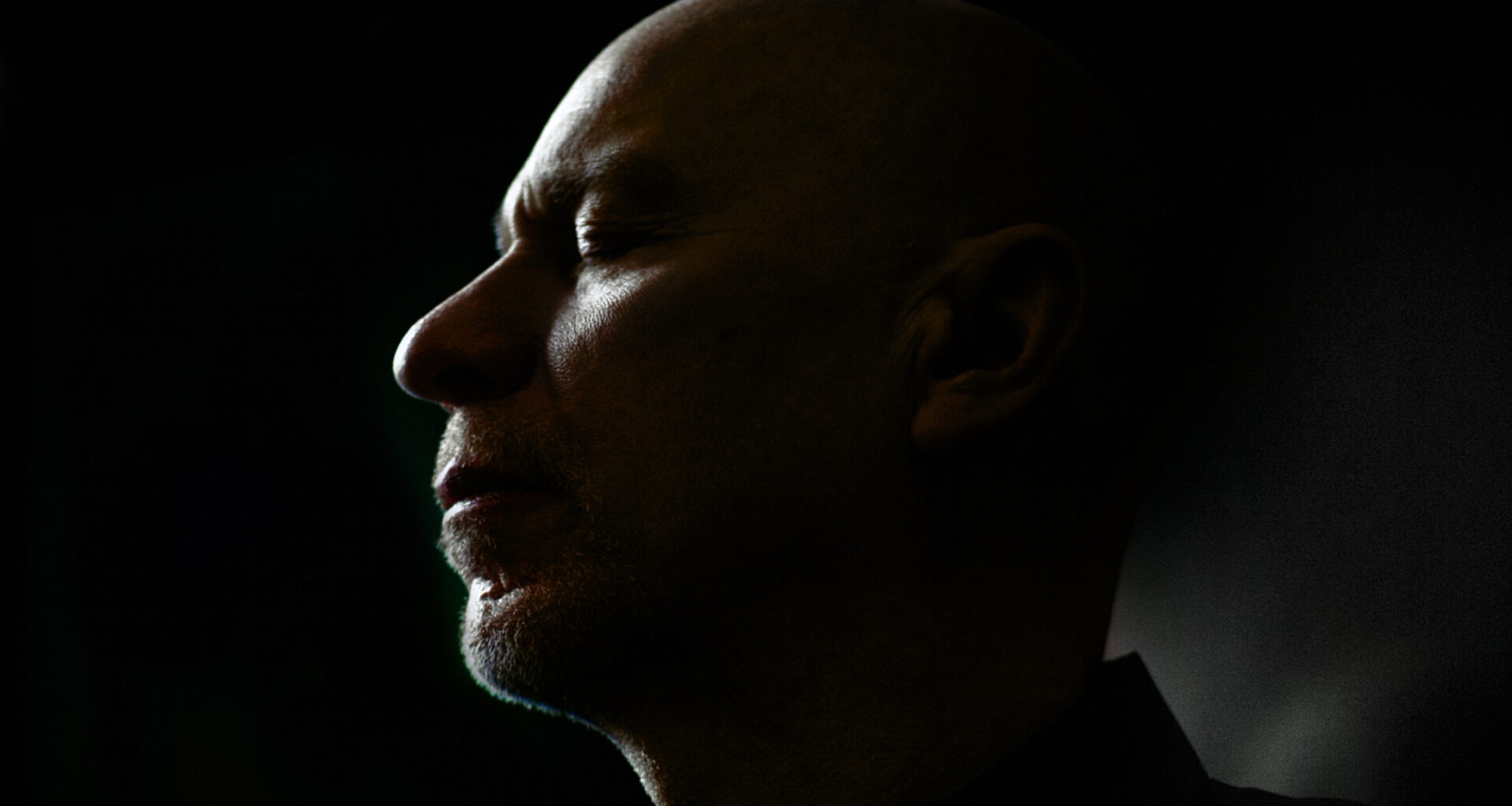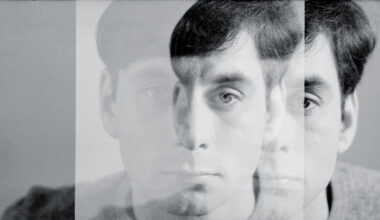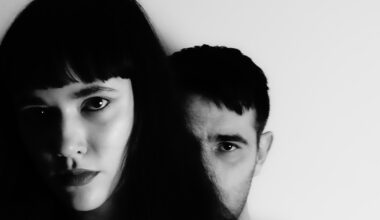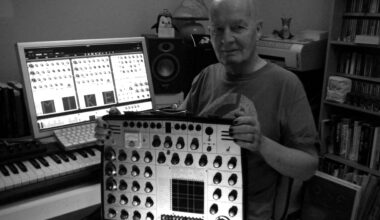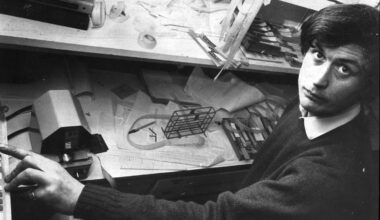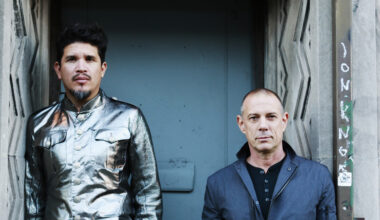In a flurry of activity, the enigmatic Matt Johnson has recently stepped back into the limelight playing a bunch of sell-out London shows before Embarking on an extensive tour with a rebooted THE THE. Hungry for more?
In an exclusive extract from the freshly-published official biography, ‘Long Shadows, High Hopes: The Life And Times Of Matt Johnson And The The’ by Neil Fraser, we join the story in 1986 with the recording of the ‘Infected’ album complete and Matt Johnson declaring he won’t be touring to promote it, but he will accompany the release with a film consisting of a promo video for each track…
Matt Johnson’s adventure on the road during the filming of ‘Infected – The Movie’ was like an unstoppable train, with a plan to follow the path of madness trodden just a few years previously by German film director, Werner Herzog, when he filmed ‘Fitzcarraldo’ in the Amazon. It was inevitable that things were going to get very messy, very quickly. He travelled to South America with a tiny crew that included [manager/Some Bizarre supermo] Stevo, director Peter “Sleazy” Christopherson, and producer Aubrey “Po” Powell, who worked with Sleazy at art design group Hipgnosis. The chances of this being a straightforward trip were nil.
Christopherson, who is probably best-known as a member of Throbbing Gristle and Psychic TV, was the man behind the camera of one of the earliest Sex Pistols photo shoots, the rent boy theme of which caused a certain amount of consternation as the ambiguous sexuality of early punk gave way to something more straight and strait-laced. Psychic TV was the ideal set up for Christopherson to further his visual ambitions and he was increasingly working with film and video. Being signed to Some Bizzare brought him into Stevo’s orbit, so he was perfectly placed to become involved in the film project that Johnson had in mind for ‘Infected’.
Johnson and Stevo had somehow managed to persuade CBS to cough up the not inconsiderable sum of £350,000 to realise this dream. For an artist of his stature this was unheard of, but with the album in the can, and unwilling to form a band to tour, the film was an alternative to performing live. CBS were reluctant, but Johnson said he would also be prepared to embark on a worldwide promotional tour of interviews, an odyssey that proved almost as gruelling as touring with a band.
Christopherson had already worked in South America, not far from where Herzog had filmed, and suggested this as a possible location. Johnson didn’t need much persuasion and it wasn’t long before flights to Bolivia were booked. There was a three-day stop-over in Jamaica where it is likely that the island’s finest herbs were sampled. Any such indulgence may have set the tone for what was to follow. Suffice to say that when they got to South America things began to warp out of shape rather wildly.
This was a travel experience in the proper sense, with hotels where, as Christopherson mentioned to one interviewer, you never knew what was going to crawl out from under the toilet seat. Johnson was particularly struck by the uneasy conflation of cultures where local Indians sporting Elvis haircuts and crucifixes guzzled Coca-Cola. Western corporate capitalism had, as Johnson saw it, infected the indigenous culture, as Catholicism had done centuries before.
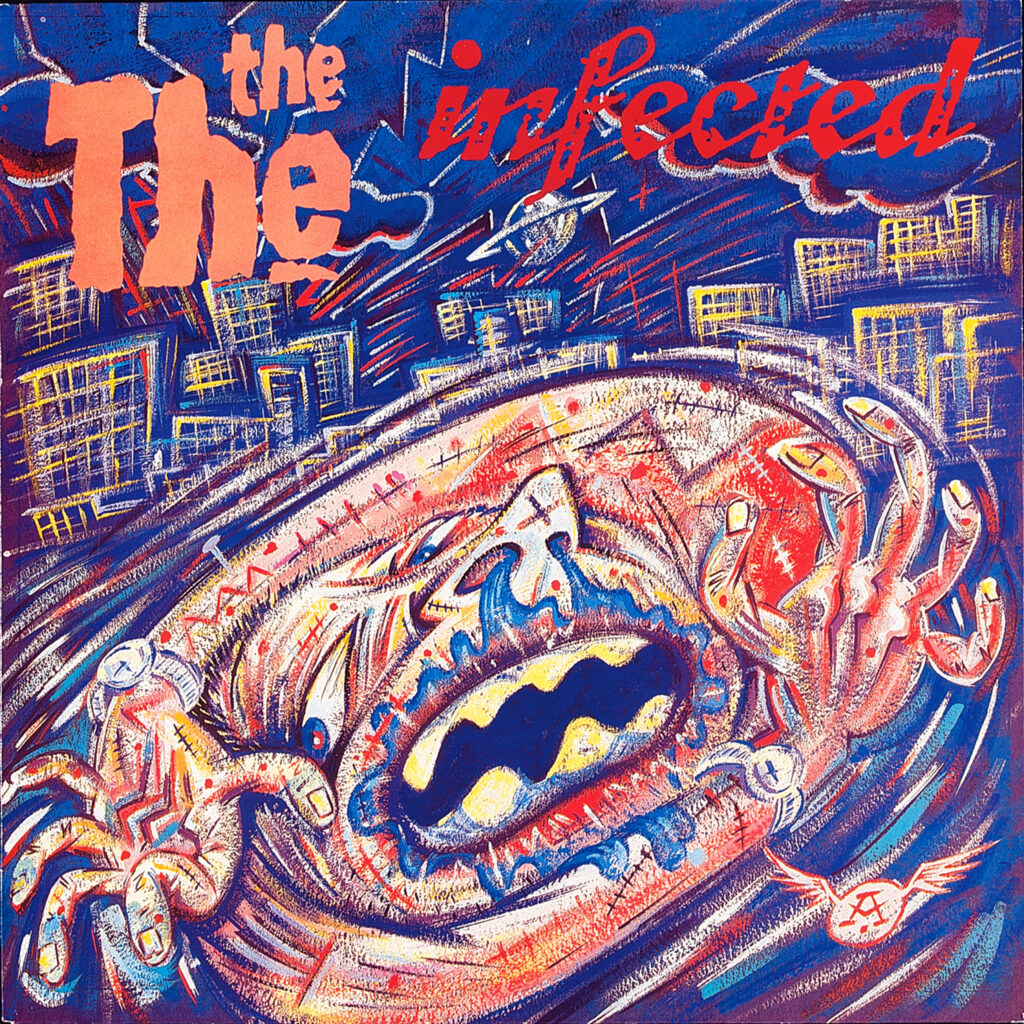
Thrown into this mix would be tribal witch doctors, communist rebels, drink and drugs. As they were in Bolivia, cocaine was hard to avoid, and of a purity that no one had experienced before. Strange local hallucinogenics were also on offer, and the strongest weed that any of those who indulged had ever smoked, not to mention all kinds of potent booze. As if trying to evoke the drink-sodden spirit of Malcolm Lowry’s ‘Under The Volcano’ via Hunter S Thompson, Johnson’s desire to push himself physically and mentally to the limit, to inform his art, inevitably led to a state of mind that swiftly became somewhat unhinged.
Though much of what happened went unreported, and much will remain so, you can see the carnage in the videos themselves. How else could you explain the spectacle of Matt Johnson strapped to a bizarre metal frame atop the deck of a boat travelling down the Amazon like some east end version of Klaus Kinski? Or more vividly in the finale of closing video ‘The Mercy Beat’, the story behind which sums up the craziness of the whole adventure.
That Johnson needed to escape himself through drink and drugs in order to film some of this stuff is perhaps understandable – he was after all not an actor, and revealed years later that he didn’t feel comfortable in his own skin at the time. He was also exploring and exorcising his own demons.
“I just felt angry about all the stuff that was going on in Britain at the time,” he says. “I was a lot younger then. Life had changed a lot for me and I was trying to deal with all these residual feelings that are dragged forward from childhood, trying to rationalise them.”
In a television special about the making of the film, he talked about the atmosphere on the shoot, which would impact his already charged mood. South America, understandably, seemed exotic compared to Europe and North America, and the sense of otherness served to push him further towards the fringes of rational behaviour.
“You almost sense the spirits in the air, there’s something magical about the place. But the thing was, the heat started getting to people, and people were doing things they shouldn’t have done, I suppose. I’m not excluding myself from blame, everyone got up to things that you can’t really talk about on TV, and we all started to get a bit paranoid.”
Also part of the small crew was Philip Richardson, who had been working as assistant to Christopherson, and was invited onto the project from the beginning, working on pre-production duties like location scouting, casting, prop-sourcing and filming cutaway scenes.
He had already worked on the ‘Heartland’ video, which had been filmed in Greenwich, but filming in South America was a touch more exotic than South London. Richardson avoided the cocaine, though he did chew his way through a lot of coca leaves, which goes some way towards explaining why he can’t remember eating anything for the entire trip.
“In Iquitos we had a fixer called Fredy Valles who spoke English,” says Richardson. “He was rumoured to have made lots of money smuggling jaguar skins out of Peru. One night Fredy took Stevo, Matt and myself out to a late-night rave in a jungle clearing. We were the only non-locals there. No one except Fredy spoke English. It was very dark, very noisy and very jungley.”
He doesn’t remember too many details of what happened that night, though does recall strange conversations that he describes as “physical”, which may, or may not, help you understand just how strange a night the trio had in deepest, darkest Peru.
Iquitos is a small city and port so deep in the Peruvian jungle it is only accessible by plane or arduous boat journey. A square in the ghetto area was chosen as a location for the filming of ‘The Mercy Beat’, which seemed to be some kind of climax to all this weirdness and tension, and it was as if all the clichés about South America suddenly descended upon the crew in a single day.
The hot square was deserted when they arrived and started to set up, but as filming was about to start in the early evening, a political rally of around 2,000 Marxist Peruvians suddenly appeared and the scene and atmosphere was, quite literally, radically transformed
Naturally, the leaders of the rally wanted to know what a film crew was doing in this sleepy part of town. Were they just another example of the capitalist West come to exploit the peasants of a foreign land? In fact, this possible contradiction had troubled Johnson. Was his attempt to highlight Western infection not, in some small way, guilty of the very same thing? Not that those particular thoughts had much time to cross his mind in the heat of the moment. Speaking to Ian Pye of the NME at the end of the year, Matt Johnson tried to convey the chaos that ensued.
“When we did that shot on the bandstand in Iquitos, a communist rally came marching through,” he explained.
“They wanted to burn down the houses of the rich people. Then they started shouting at us. ‘Gringos, the exploiters!’. The Indians stood around us and protected us. I was trying to hurl Stevo out into the crowd to film them. He’s going, ‘Get off, leave me alone’. Then the generator went dead and all the lights went out.
Everybody was terrified. The communists’ leader managed to climb onto the bandstand. He was screaming, going mad. But two of the crew managed to hurl him off. Although I don’t think we really captured what went on down there, I think you can see it’s not just a performance. I lived that song when I was there.”
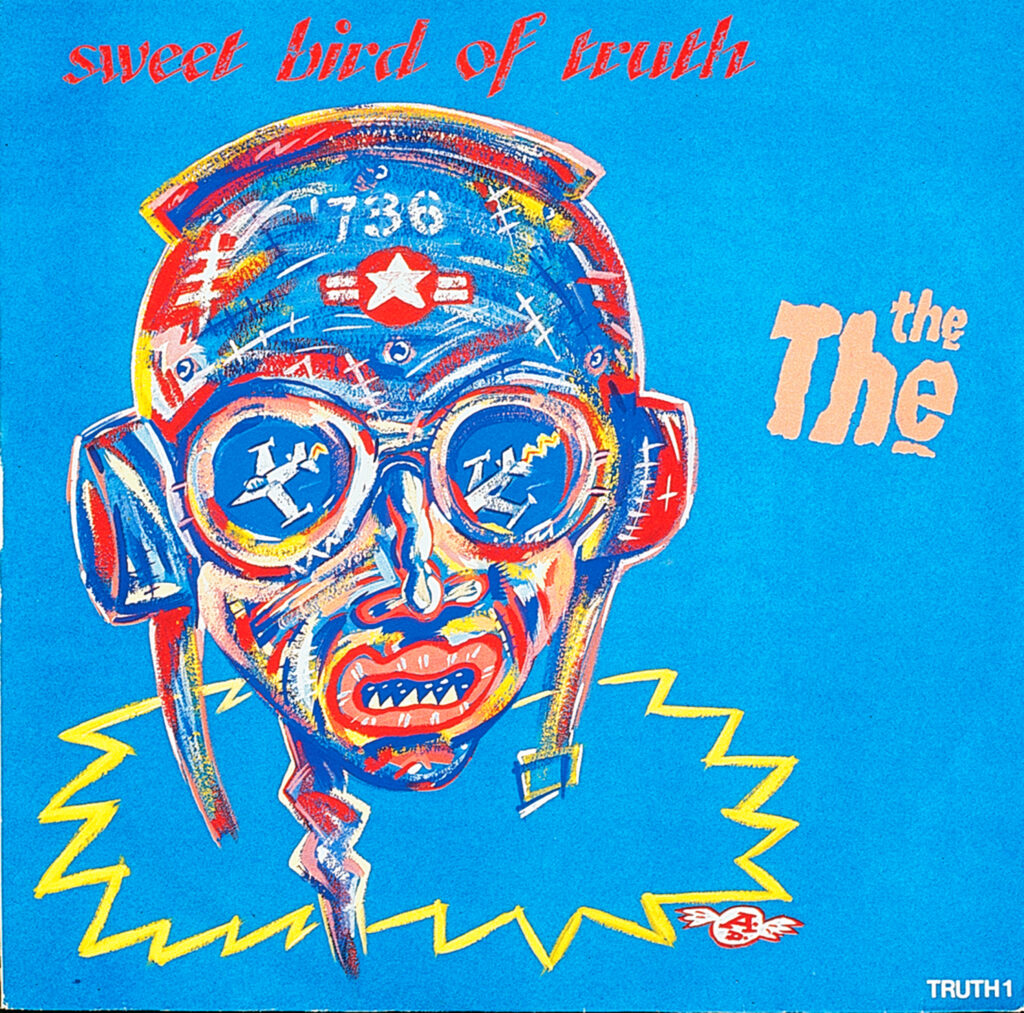
You couldn’t really have made this up: a small film crew from the UK making a video for a pop star who was questioning Western democracy, when all of a sudden the Sendero Luminoso (Shining Path), who wanted to replace bourgeois democracy with a “New Democracy”, appear in the very same square. The two political viewpoints were on the same side of the fence, but the protagonists were, in reality, worlds apart.
The pragmatic Christopherson, interviewed for the television special about the making of the film, explained how they were able to exploit the situation they found themselves in.
“What you have to do is use those situations and make them work for the film. I think that if you have an artist who is prepared to take those risks, because a lot of rock musicians are not prepared to take any risks whatsoever, you can do that. That’s one of the good things about Matt, he’s prepared to stand up in the middle of 1,000 people who are all completely out of their heads on cane alcohol or drugs or whatever, and, you know, go through that experience… hopefully that intensity comes out in the films.”
Anyone who has seen the video can make their own mind up. The chaos captured was mostly unchoreographed. Johnson looks possessed, and who’s to say he wasn’t?
Though the craziness subsided, the remainder of the trip, if Richardson’s recollections are anything to go by, was like the wreckage of a wild party.
“The craziness was unrelenting right to the very end,” Richardson recounts. “Filming proper had finished in La Paz, and we were due to return to England the following day. Peter asked me to take the ‘The Mercy Beat’ car out and do some cutaways. I went with the Spanish-speaking production assistant, Mark, who drove while I filmed. On the street we were accosted by a thin, casually dressed man in mirror shades and moustache.
Although the conversation was in Spanish, I understood that he was asking Mark what we were doing, whether we had a permit, passports please, and take me to your hotel. On arrival, this not-so-secret policeman said that the whole crew were to be confined to the hotel until an investigation had been made and suitable fine agreed. Later, in the dead of night we gathered in the foyer, split into various cabs and drove swiftly to the airport.
“Unfortunately, on arrival at Heathrow, we were expected. Each crew member was intimately searched, the film cans were opened… nothing was found. Matt had headed for New York and given me a wooden flute to bring back for him. As they searched me, a small package was detected jammed halfway up the flute. It took the customs officer an age to get it out while I cried inside. Turned out to be a piece of crumpled-up newspaper. I never did find out if Matt put it up there on purpose.”
Three decades on, the man himself professes innocence, though he does remember how Christopherson fared.
“There’s a very funny story Sleazy told me after he’d been strip-searched back at Heathrow upon his return. Anyone who knew him and his particular predilections and perversities knows it is probably true. He was stripped naked in a room with a couple of customs officers giving him a thorough inspection and after they’d donned the latex gloves and inspected a certain intimate cavity, Sleazy then told them, ‘It’s up there somewhere… you’ll just have to search harder!’.”
Johnson, meanwhile, had arrived in New York, to work with [director] Tim Pope, in a state of disrepair. Having survived some dangerous experiences, be it strapped to a boat, threatened by the Shining Path or kissing snakes, this was a different Matt Johnson.
“He arrived in New York and he was in a real state from South America,” says Pope. “Frankly I did not like him very much. He was very difficult, dangerous even. He was in a completely worn-out state, beyond exhaustion, and I remember he would go to the gym and really work himself out, but then would drink like mad. He was really, really edgy, very difficult to work with.”
There was certainly no love lost between the two at this juncture. Though they are now good friends, Johnson’s view of Pope at this point was not much better than Pope’s view of him.
“I arrived into Manhattan from South America feeling emotionally and physically exhausted and was immediately thrown into yet another shoot. There was something about Tim’s demeanour in those days that immediately started to grind my gears. Having this person then trying to order me about was like a red rag to a bull really.
“I wanted to ensure these shoots would be like nothing he’d ever worked on – before or since. I was exercising hard, guzzling vodka and all the while Stevo was feeding me cocaine on the sidelines. To his credit Tim went toe to toe with me the entire time. The film he made for ‘Out Of The Blue (Into The Fire)’ is still my favourite even to this day. But we bonded through that experience and out of that a mutual respect and genuine affection and friendship grew.”
By the mid-80s, the majority of music videos on MTV were safe, bland productions, stuffed to the gills with clichés such as petals falling in slow motion, billowing curtains, people running down corridors or splashing into swimming pools. They weren’t typically filmed in a real-life brothel in New York.
‘Out Of The Blue (Into The Fire)’, Johnson’s confessional about lust and infidelity, was filmed in glorious 35mm colour, the drink-sodden singer manifesting his guilt in a performance as far removed from the standard music video as it was possible to get. Rather than a fantasy vision, Pope was to present a slightly crazed, but far more honest depiction of where male sexual fantasy could lead than was being portrayed at the time in videos by the likes of Duran Duran.
“We started in the afternoon and shot the scenes in an apartment on Bowery,” says Pope. “We brought hundreds of cockroaches which we let loose, and I sometimes think of the poor sod who inherited that place; there’s probably thousands of cockroaches still walking around it now. Then we went up to Spanish Harlem. What we didn’t know was crack was just becoming a big thing, and we’d chosen to film in an area near the biggest crack dealer. It was very edgy. So we had police protection. I was standing on the sidewalk with my producer and all the crew were loading up the gear and this huge rat came out of this building site next to us and ran around our feet. I watched this rat roll onto its back, have an epileptic fit in front of us and die. And that was about the best fucking thing that happened that evening. From thereon it was downhill.”
‘Long Shadows, High Hopes: The Life And Times Of Matt Johnson & The The’ by Neil Fraser is published by Omnibus Press
